When you think of classic Disney dark rides, you might imagine yourself soaring over London in an enchanted pirate ship, racing through the dark forest to find Snow White before it’s too late, climbing through Wonderland aboard a most unusual caterpillar, or facing Monstro’s razor-sharp teeth with Pinocchio. These Fantasyland dark rides are standards – decades old, classic in every sense, rooted in Walt Disney’s style, and beloved by generations of fans.
But when it comes to the most beloved, lost classic Fantasyland dark ride, one sentence comes quickly to mind: Toadi Acceleratio Semper Absurda.
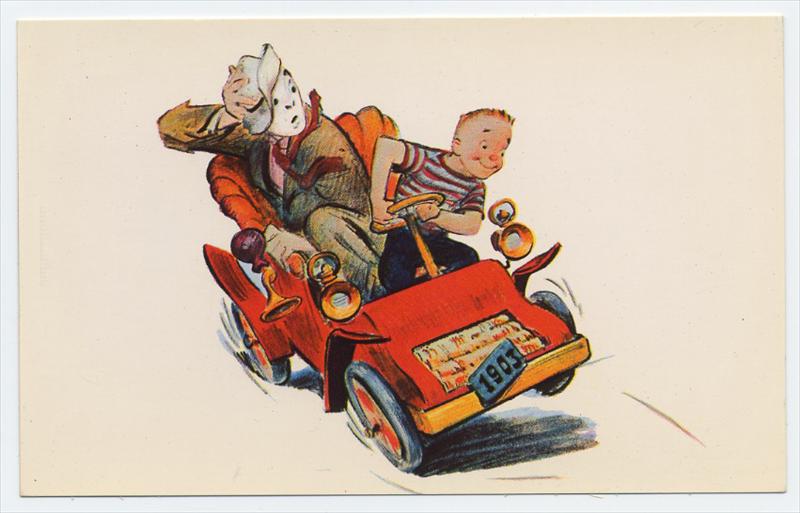
From the start, our LOST LEGENDS series has set out to celebrate and remember closed classic attractions before they’re lost forever. All along, we’ve asked you which rides you’d like us to include in the Lost Legends series, and you’ve answered. So today, we’ll finally go whipping around the streets of London aboard Mr. Toad’s Wild Ride!
An outlier in Magic Kingdom’s Fantasyland, this whimsically wild ride based on a little-known animated double-feature film included one of the strangest and most surprising finales of any Disney ride ever. Despite being one of the oddest stories featured at a park otherwise populated by beloved heroes and well-known stories, Mr. Toad’s Wild Ride gained (and earned) a cult-like following based on its wacky, wonderful nature. So now, let’s put pedal to the metal and see what mayhem we can cause en route to nowhere in particular! After all, Disney fans fought to save this Magic Kingdom classic from the wrecking ball… and lost. Here’s the story…
And before we head off, remember that you can unlock rare concept art and audio streams in this story, access over 100 Extra Features, and recieve an annual Membership card and postcard art set in the mail by supporting this clickbait-free, in-depth, ad-free theme park storytelling site for as little as $2 / month! Become a Park Lore Member to join the story! Until then, let’s start at the beginning…
“The Wind in the Willows”
The story begins more than twenty years before Magic Kingdom would open. Remember that, when Snow White and the Seven Dwarfs premiered in 1937 at the Carthay Circle Theater, it was more or less assumed that Walt Disney would be finished. After all, Snow White was the world’s first full-length animated feature film and right from the start, it was called “Disney’s Folly.” Critics assumed that this would be Walt’s first big misstep – the thing that brought it all down.
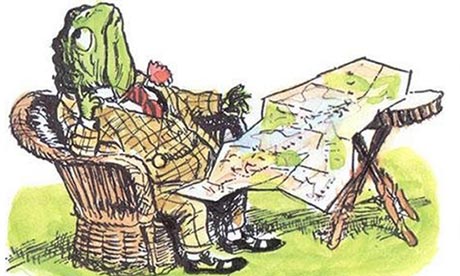
Of course, Snow White was received with great acclaim. Walt was even awarded an Honorary Oscar for his work and the continuation of Disney Animation was assured. Soon after Snow White’s release, Walt was approached by animators James Bodrero and Campbell Grant about adapting Kenneth Grahame’s 1908 children’s book The Wind in the Willows into a film. The story (centered on a host of anthropomorphized animals including Mr. Toad) could only be brought to life through animation. Walt objected, saying the idea was “awfully corny,” but acquired the rights in June 1938.
By time 1941 rolled around, the script was complete. The Wind in the Willows would be a budget film (like Dumbo) but it would employ many of the prestigious animators currently finishing up Bambi. By the middle of the summer, more than 30 minutes of the film had been animated.
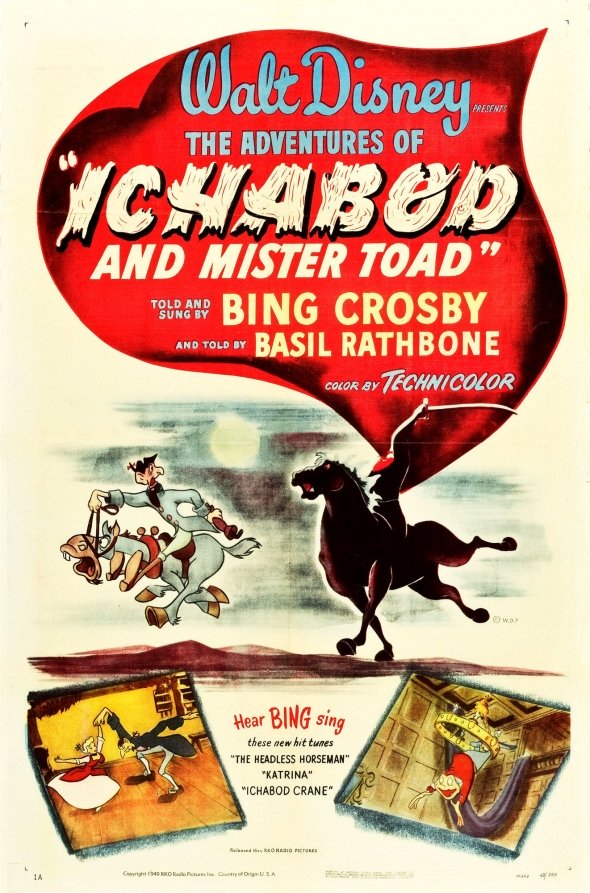
Then, World War II cooled the animation industry. Disney was tasked with producing propaganda films for the US government and the studios entered into a period focused on package films – several different short films presented together, often united by a common theme or a frame story. Films like The Three Caballeros (1944) and Melody Time (1948) exemplify this unique cost cutting undertaken during the War, when animators were drafted and overseas releases were cut off. When production re-started in 1945, animators finished off whatever footage they’d created for The Wind in the Willows and decided to release it as a package paired with another short film: an animated version of Washington Irving’s 1820 Legend of Sleepy Hollow, introducing the dreaded Headless Horseman.
Though Walt was infamously not a fan – ready to move on to bigger and better things – The Adventures of Ichabod and Mr. Toad was finally released in 1949 as Disney’s eleventh animated feature film. It was also the last of Disney’s War-era package films. (They’d return to their full-length format the following year with 1950’s Cinderella.)
The road to Toad
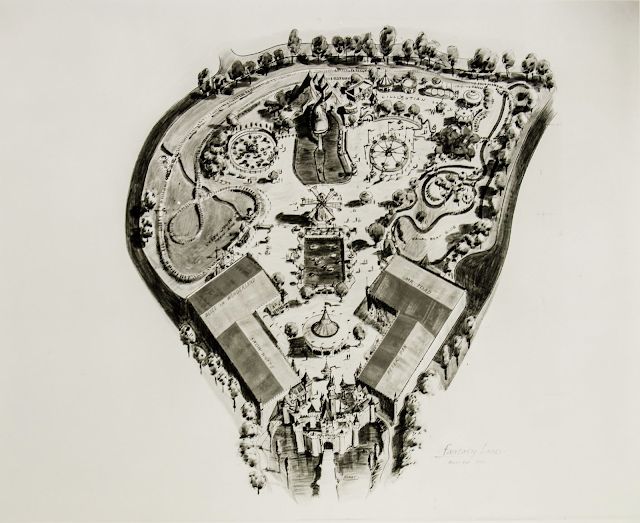
As late as 1953 – two years before Disneyland’s opening – Walt prepared a prospectus for potential investors of Disneyland, meant to convince them that the creations within warranted their funding. In fact, his plans for Fantasyland were described as containing a ride-through Snow White’s Adventures, a fly-though alongside Peter Pan, and a walk-through Alice’s adventures in Wonderland.
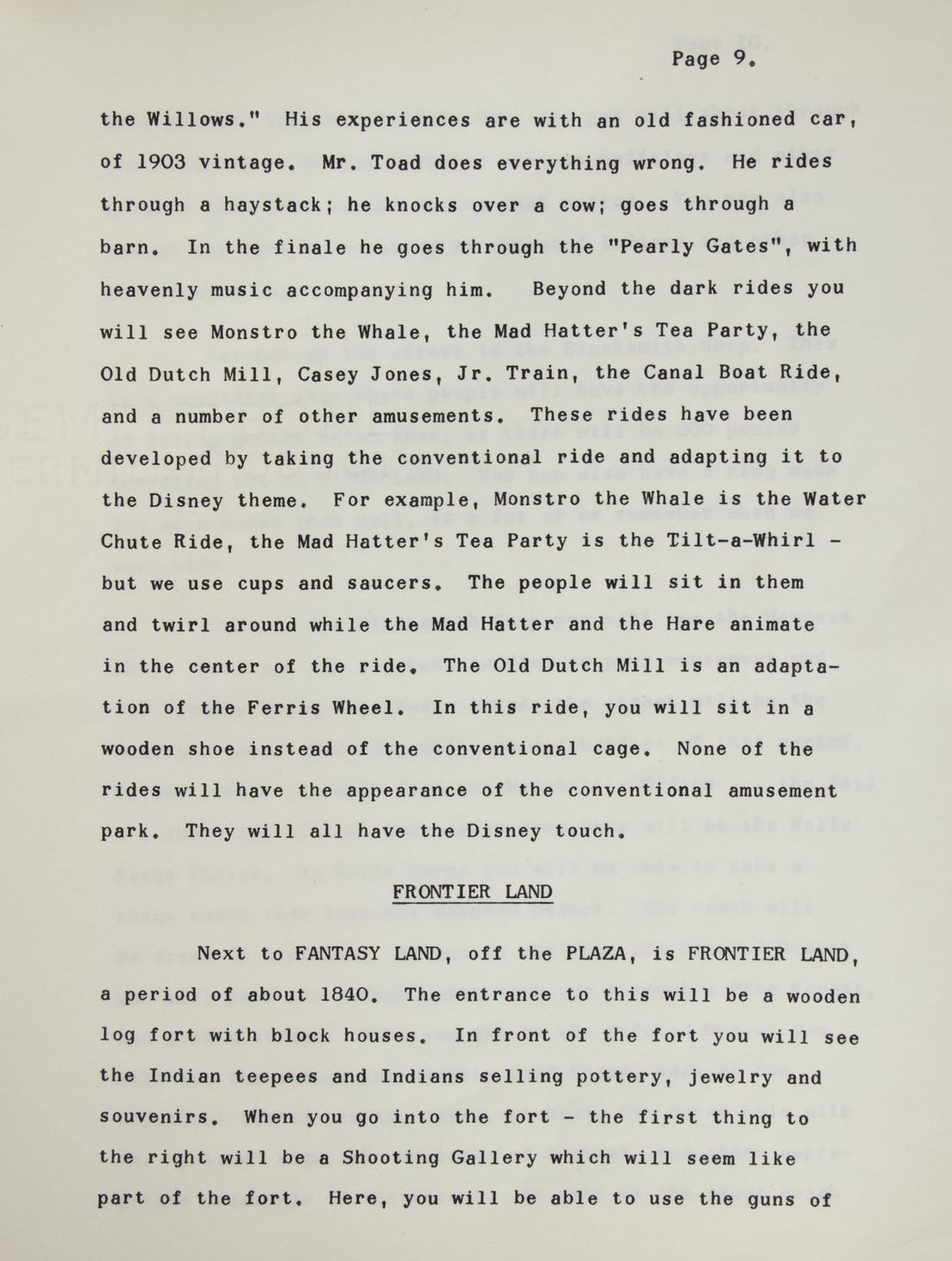
Given Walt’s relative disinterest in the characters from the Wind in the Willows, perhaps it’s no surprise that Mr. Toad was conspicuously absent… Yet at the release of an updated and rare 1954 prospectus, he’d appeared. “Mr. Toad does everything wrong. He rides through a haystack; he knocks over a cow; goes through a barn. In the finale, he goes through the ‘Pearly Gates,’ with heavenly music accompanying him.”
What changed? Frankly, Walt had learned the hard way that the varied experiences he envisioned for Fantasyland were well out of the scope of his budget. Though he hoped for more, Fantasyland would need to be stocked with simple dark rides powered by off-the-shelf ride systems and populated with flat, plywood panels painted by Disney animators.
All of the sudden, Walt and his designers found themselves working out of the catalogue of a new partner – Arrow Dynamics of Mountain View, California. Arrow would supply both the classic bus bar powered ride systems and the off-the-shelf vehicles for Fantasyland’s dark rides, doing their best to overlay fiberglass and steel designs to align their ride vehicles to the look and feel Disney wanted.
It would be easy enough to turn Arrow’s off-the-shelf ride vehicle into a mine cart for Snow White and a pirate galleon for Peter Pan… But frankly, Disney needed another ride that could easily and cheaply use the ride cars Arrow offered… Yep, with a sketch of Mr. Toad’s 1903 automobile in hand, Arrow got to work developing decorative shells (see the Passholder-exclusive schematic above) to graft onto their existing ride stock.
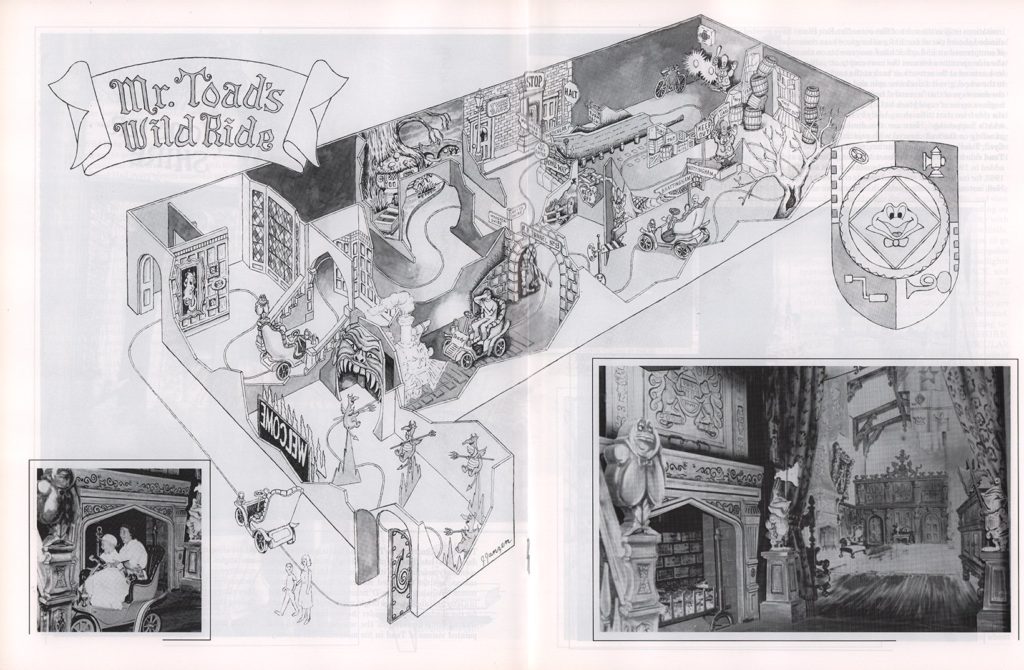
Meanwhile, Disney art director Bill Martin designed the ride to carry the original themes of the film (and to incorporate the zippy turns and twists left from a short-lived idea of using Arrow’s Wild Mouse roller coaster system as the ride’s basis). “Viewing the film was part of the design process,” he later recalled, “I made the track layout to start with, but we went through storyboards galore. Since the point was to convert Walt’s cartoon films to rides in Fantasyland, those dark rides were developed from the original 4 x 8 storyboards and concept sketches made for the animated films.”
The wild ride begins
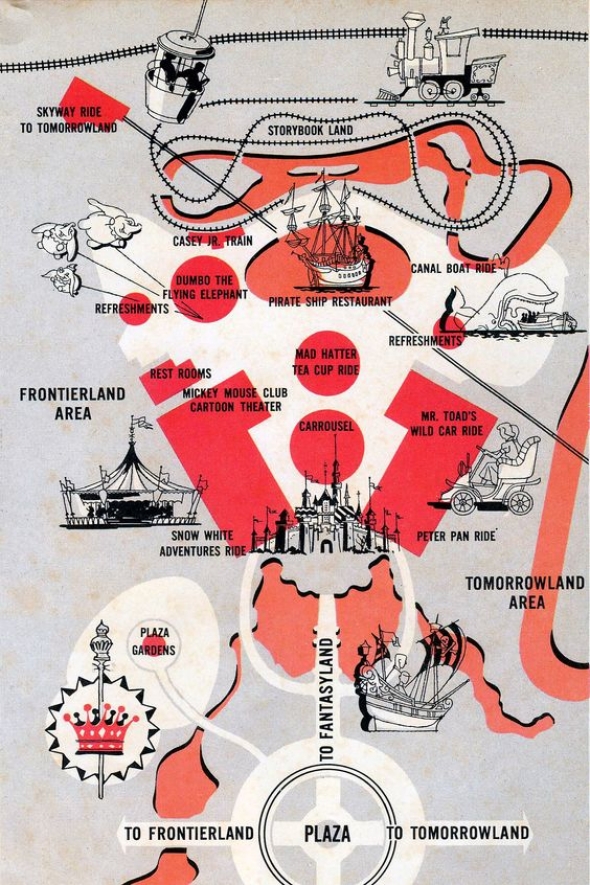
On Opening Day, Disneyland’s Fantasyland was home to three such dark rides: Peter Pan’s Flight, Snow White’s Adventures, and Mr. Toad’s Wild Ride.
Mr. Toad’s portion of The Adventures of Ichabod and Mr. Toad chronicles the wayward stories of the well-meaning but eccentric amphibian J. Thaddeus Toad, Esq. An upper-crust elite, Mr. Toad is maniacally attracted to whatever the current fad might be, and he’ll bankrupt himself out of the majestic Toad Hall to get it. While he’s known to zoom across the English countryside on his horse and buggy, lately Toad is abuzz about the newest craze sweeping society: the horseless carriage. One look at the brand new, sputtering, guzzling, rumbling motorcar and Toad is struck by “motor-mania” and offers to trade the deed to Toad Hall for a car of his own.

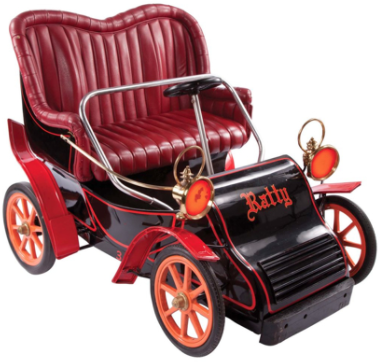
Aboard Mr. Toad’s Wild Ride at Disneyland, guests were seated aboard 2-or-3 person early 1900s motorcars and sent barreling through the foggy streets of London and the chaotic countryside!
The jolly jalopy jaunt was set to the ever-present tunes of “The Merrily Song” (composed by Frank Churchill, who created, among others, the Three Little Pigs‘ “Whose Afraid of the Big Bad Wolf?” and Snow White‘s “Whistle While You Work;” streamable exclusively for Passholders, above), promising the iconic destination of “nowhere in particular;” “nowhere at all!”
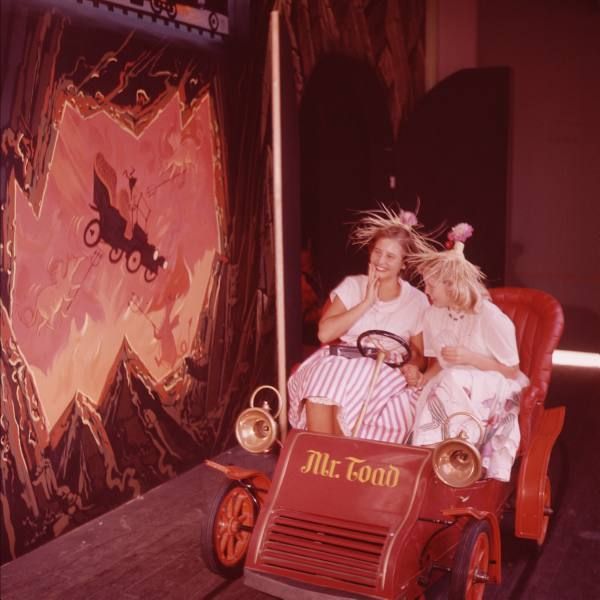
Unlike Fantasyland’s more subdued and subtle dark rides, Mr. Toad’s ride is wild indeed, bursting through a fireplace, whipping around turns, rumbling over a boardwalk, and zipping through town as cutout figures appear to dive out of the way! The mad dash through the countryside ends with us being sentenced to jail but, en route, we’re struck by a train and detoured into… well… a very memorable finale.
Mr. Toad’s Wild Ride was at once a classic, somehow perfectly at home among the more enchanting, fairy tale stories and settings of Fantasyland. And that made it an easy for choice for duplication at the brand-new Walt Disney World being built in Florida. As we’ve seen time and time again, Imagineers did better than to simply copy Disneyland’s rides bolt-for-bolt. Given the benefit of limitless land, bigger budgets, and the invaluable gift of foresight and master planning, Imagineers knew that Mr. Toad in Florida deserved a bigger space and an even grander adventure.
So what awaited guests inside of the unique, super-sized Mr. Toad’s Wild Ride in Walt Disney World’s Magic Kingdom? Read on…



